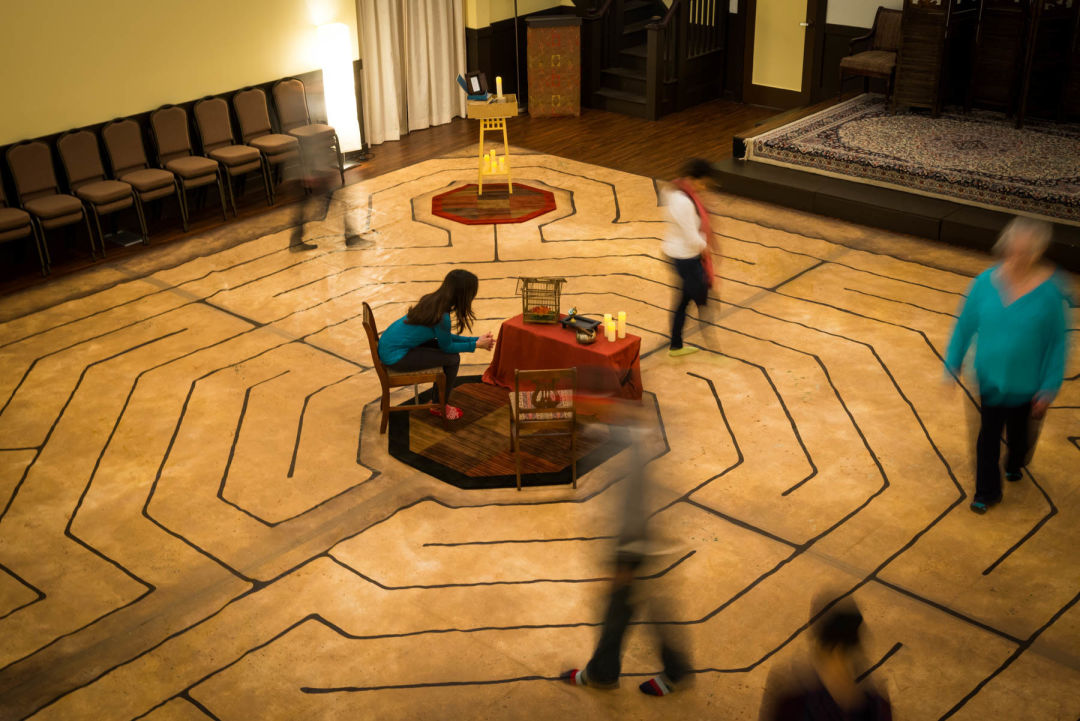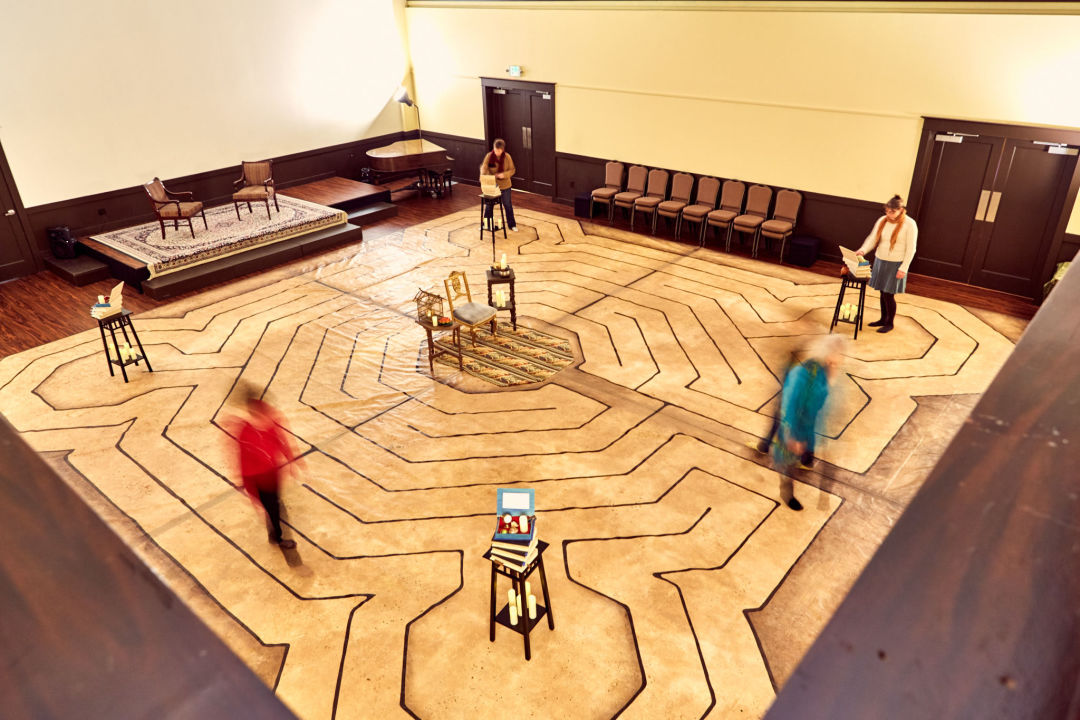Labyrinths: An Alternative Mode of Moving Meditation

Cerimon House's labyrinth walk is open the last Sunday of every month.
Image: Lindsey Rickert
It’s no secret that America is deep into a mindfulness craze (or “meditation madness,” as one disgruntled New York Times reporter bemoaned). But if lotus-posed reflection has never fit your vibe, Cerimon House, a community cultural arts space off Alberta, is hoping to popularize an alternative.
Since the new year, the Cerimon House team has spent one Sunday a month unrolling a 33-square-foot, Tyvek paper replica of a four-point labyrinth once inlaid into the floor of a cathedral in Reims, France. The pattern is a circuitous walking route to the center—where chairs await for a moment of seated reflection—supported by four “harbor points” where curated collectibles (think palm-sized ceramics, grainy photographs, inspirational aphorisms) unite around a common theme.
The program is a labor of love for Cerimon House founder (and project mastermind) Randall Stuart, who met some labyrinth-community heavyweights in the ‘80s. He’s rebellious in his approach to the centuries-old meditative practice, reveling in a multi-sensory experience that finds significance in everything from the click of a closing door to the rustling of paper under sock-clad feet.
“To have this labyrinth be very purposefully indoors, I knew we could integrate sound, light, and the movement of people themselves,” he says. “What has come from that is the ability to say to people, ‘Imagine this as your own story. This is you walking through the chapters of your own life.’”
While it might seem strange to devote 20 minutes or more to walking a loop with fellow shuffling strangers, Jodi Lorimer, the Portland-based author who literally wrote the book on the subject—fun fact: also the voice you hear on TriMet MAX—says there is a science-backed explanation for the consciousness-altering effects of labyrinths.
“Because you’re walking back and forth and around and around,” Lorimer says. “You’re essentially doing a left brain-right brain transformation. And like any repetitive motion, like rocking, or chanting, or dancing, those kinds of things alter your brain waves.”

The Cerimon House labyrinth features a different theme each month.
Image: Gregg Le Blanc
While Cerimon House’s labyrinth project is still in its early stages, Stuart envisions it as a community-based safe space to contemplate and respond to current events.
“I chose the themes carefully, but I wanted them to be generic enough that we could also stay responsive to what’s happening in the news,” he says. “While we are not political, we will continue to think about what it is for citizens to come in as a community and walk a labyrinth together.” With that mission in mind, Stuart altered his plans last January following the mass success of Portland’s Women’s March, offering resources for visitors to explore their frustrations and spend their after-walk teatime writing a letter to their senator.
Whether seeking solace from a charged political climate, pursuing personal fulfillment, or just interested in the pleasant quietude of a window-rich room with free tea, the appeal of labyrinths like Cerimon House's centers on a characteristic ability to fulfill the individual needs of each visitor.
“People walk a labyrinth, get to the center and focus,” Lorimer says. “People find it to be insightful, and calming, and healing, so that when you come back out from the labyrinth, you have a sense of resolution.” Ready to give it a shot? Labyrinth walks are held in 30-minute sessions from 1–4:30 p.m on the final Sunday of the month. Reserve your spot online for $10 (sliding scale).




